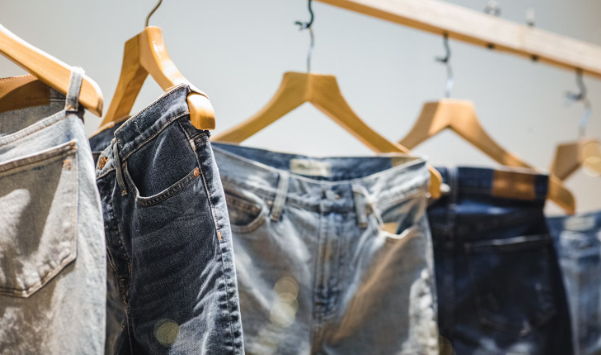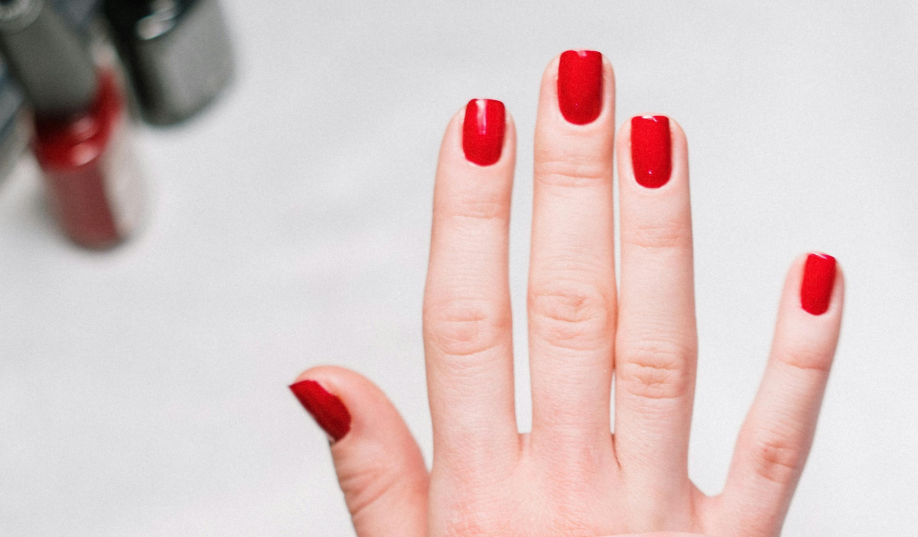The History of Jeans. Where Did They Come From?

© Jason Leung / Unsplash
From the wise words of Lana Del Rey ” Blue Jeans, White Shirt,” we can tell that this combination is a common thing we see in media.
The history of jeans dates back to the 19th century and has evolved into a timeless fashion staple. From miners to movie stars, jeans have played a significant role in shaping fashion trends around the world. But, have you ever wondered where your favorite pair of jeans originated from?
The History of Jeans
Where did jeans come from? How did they become such a staple in our daily lifetimes today? This is the history of jeans:
Denim
Before we dive into the history of jeans, we need to discuss how denim fabric emerged. The origin of denim is debated among historians. However, the main theory attributes its creation to weavers in Nîmes, France, in the late 17th century.
These weavers were attempting to replicate a durable fabric known locally as sergé. Accidentally, they produced a fabric that would evolve into modern denim. They named it “sergé de Nimes” in accordance with the tradition of naming textiles after their place of origin.

Another claim suggests that artisans in Genoa, Italy, were concurrently producing a sturdy fabric made from indigo-dyed wool and cotton. This was favored by sailors for clothing and sails.
Despite the differing narratives, the end result is the same. Denim originated in the Mediterranean region and later journeyed across the Atlantic to America.
The History of Jeans
Levi Strauss, a German immigrant, established a branch of his family’s dry goods business in San Francisco in 1853. He supplied denim fabric imported from Europe. A tailor named Jacob Davis used Levi’s denim to create sturdy items. He then commissioned to make durable trousers and reinforced them with copper rivets.
In 1873, they partnered and patented their riveted work pant, marking the birth of Levi Strauss & Co. Denim overalls production began in the 1870s. This led to the introduction of the first pair of jeans in the 1890s, which became iconic American workwear.

The Wild, Wild West!
During the early 1900s, jeans remained essential workwear. They were particularly favored in the West by miners, railroad workers, and cowboys who replaced traditional pants with the more affordable and durable denim option.

In the early 1900s, Hollywood played a pivotal role in mainstreaming jeans. Western films featuring stars like John Wayne and Gary Cooper wearing denim jeans, along with actresses like Ginger Rogers, popularized the trend.
By the 1930s, Vogue labeled jeans as “Western chic,” and in 1942, designer Claire McCardell’s denim “Popover” wrap dress sold massively. The jeans craze transcended workwear, expanding from the West to the East with the influence of Hollywood and dude ranch culture.
The Roaring… 19s?
During the 1950s, jeans became synonymous with “cool,” as pop culture icons like James Dean and Marlon Brando popularized cuffed, boxy denim styles in their films, challenging societal norms.
Teens, inspired by these rebellious on-screen personas, embraced jeans, leading to some high schools banning them due to their perceived provocative and anti-establishment nature.

In the 1960s, jeans became symbolic of peace, love, and social activism. University students wore them during protests against the Vietnam War, and Civil Rights activists donned denim as a sign of solidarity with the oppressed and working class.
The free-spirited atmosphere of the decade embraced jeans as not just casual wear but also as a means of creative expression and embodying a liberated lifestyle.
In the 1970s, denim reflected a move toward a more liberated and sexually expressive culture, embodied by iconic figures like Farrah Fawcett and Lauren Hutton. Slimmer silhouettes and bold styles became popular, epitomized by the infamous Daisy Dukes, popularized by Catherine Bach in The Dukes of Hazzard, sparking a craze for barely-there cut-offs that extended into the following decade.

The Designer Exclusive
In 1976, Calvin Klein broke ground by showcasing jeans on the runway, pioneering designer denim. This moment marked a shift in the perception of jeans as high fashion.
A pivotal moment in this evolution was a sensual campaign featuring a 15-year-old Brooke Shields, with the iconic tagline, “Nothing comes between me and my Calvins.”

Designer jeans became status symbols in the fashion world, with brands like Calvin Klein, Armani, Jordache, and Gloria Vanderbilt leading the pack.
Trends like stonewash, acid wash, ripped jeans, and tapered cuts dominated denim styles of the era, reflecting the fashion preferences of the elite.

The 1990s were defined by the rise of grunge and hip-hop, influencing denim fashion. Straight-legged jeans embodied a casual, Cobain-inspired look, while “mom jeans” gained popularity for their high-waisted relaxed fit.
Oversized denim, exemplified by JNCO, became iconic, along with carpenter jeans featuring multiple pockets and tabs. Head-to-toe denim outfits were also a notable trend of the decade, capturing the essence of ’90s fashion.
Showing Off That Bod’!
“I don’t think you’re ready for this…belly?”
In the early 2000s, female artists such as Destiny’s Child, Britney Spears, and Christina Aguilera popularized ultra-low-rise jeans, despite their discomfort and lack of modesty. Flare and bootcut styles also thrived, alongside the resurgence of Capri jeans.
Established brands like Levi’s, Lee, and Wrangler remained prominent, but there was growing interest in premium denim labels like 7 for All Mankind, Citizens of Humanity, and Frankie B, the latter founded by a former Guns N’ Roses member.

Around 2010, music festivals evolved into fashion-forward events, giving rise to festival wear. Vintage-inspired denim pieces like overalls, jumpsuits, and rompers became essential for concert-goers.
However, the dominant trend of the decade was the widespread adoption of skinny jeans, fueled by advancements in stretch denim technology. Skinny jeans became a versatile choice for everyday wear, transitioning seamlessly from weekdays in the office to weekend outings and date nights.
How Has the History of Jeans Impacted Today?
From skinny jeans to wide-leg, bootcut, and flare styles, there is a plentiful variety to suit diverse outfits and personal tastes, solidifying jeans’ eternal place in our wardrobes. Their versatility to dress up or down is undeniable.
The last global pandemic highlighted the importance of comfort in fashion, a factor that remains top-of-mind today. As the saying goes, “Look good, feel good.”

Jeans have continuously evolved, reflecting the times and cultures they inhabit. Initially celebrated for their durability as workwear, they have since become symbols of global issues and pop culture movements, from 1960s counterculture to the influence of hip-hop style and beyond.
Where do you think the history of jeans will lead us next?
You might also want to read: How to Build a Capsule Wardrobe With the Essentials Only


